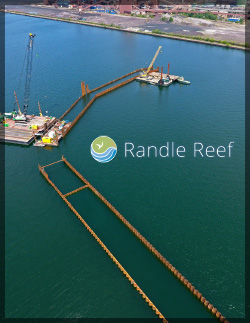Hamilton, Ontario, nicknamed Steel City for its 150-year history as a steel-making town, is one of the country’s most highly industrialized areas— 60 per cent of Canada’s steel is produced in Hamilton.
Steel has done a lot of good for the region, but it hasn’t been without its negative consequences. Because of years of industrial work and environmental regulations of the time, Hamilton Harbour became one of the most polluted harbours in the country, with significant water quality impairment from the intensive industrial and urban development around its shores for decades.
Remediation Project
As early back at the 1970s, and increasingly in the 1990s, efforts to improve the conditions have been made to improve the water quality and control pollution have reversed some of the environmental damage. Readers may remember a highly publicized harbour swim in the 90s by then Local MP and Cabinet Minister Sheila Copps, something that would have been unthinkable without the improvements.
Randle Reef
Nevertheless, Hamilton Harbour is still listed as a Great Lakes Area of Concern, particularly because of a site within the harbour called Randle Reef, an area the size of 120 footballs fields, and “the most dire of identified water pollution issues awaiting remediation in Canada” according to the National Post.
Cleaning up Randle Reef is the last remaining major environmental restoration action towards taking Hamilton Harbour off the list of Great Lakes Areas of Concern. It entails removing years of collected coal tar, which contains highly toxic polyclic aromatic hydrocarbons (PAHs) and heavy metals. Scheduled for completion in 2022, the Randle Reef Contaminated Sediment Remediation Project will cost $138.9 million (split between the Federal and Provincial governments, and the Cities of Hamilton and Burlington, Halton Region, the Hamilton Port Authority and Stelco (formerly U.S. Steel Canada).
The total equivalent of three full hockey arena’s worth of sediment will have been dealt with through three stages: in 2015, the re-constructing an adjacent harbour pier wall and facility construction started, which will allow for sediment to be dredged from this area in the second stage of the project.
Stage 2 involves dredging contaminated sediment from the surrounding areas and placing them in the facility via an underwater pipeline. This stage is expected to begin in the spring of 2018 and take two years to complete. Stage 3 involves removing the water from and compacting the contained sediment and then constructing an impermeable cap on the facility.
Economic Benefits
It is estimated that the project will generate approximately $151 million in economic benefits, including job creation, business development and tourism. As contamination is reduced and the stigma of a contaminated harbour is removed, business development may be accelerated with more companies willing to set up in the Hamilton area. The project is also expected to generate economic returns through the creation of valuable port lands. The waterfront development is also expected to encourage more tourism in the area.
Real-time environmental monitoring systems are being used to measure air and water quality in the construction area throughout these stages. Air and water quality criteria have been established to ensure that human health and the environment are protected—the project will improve water quality and reduce contamination in Hamilton Harbour, which will benefit fish, wildlife and people wanting to enjoy a cleaner water supply.
*Source: www.canada.ca and www.randlereef.ca







 Click to View Brochure
Click to View Brochure